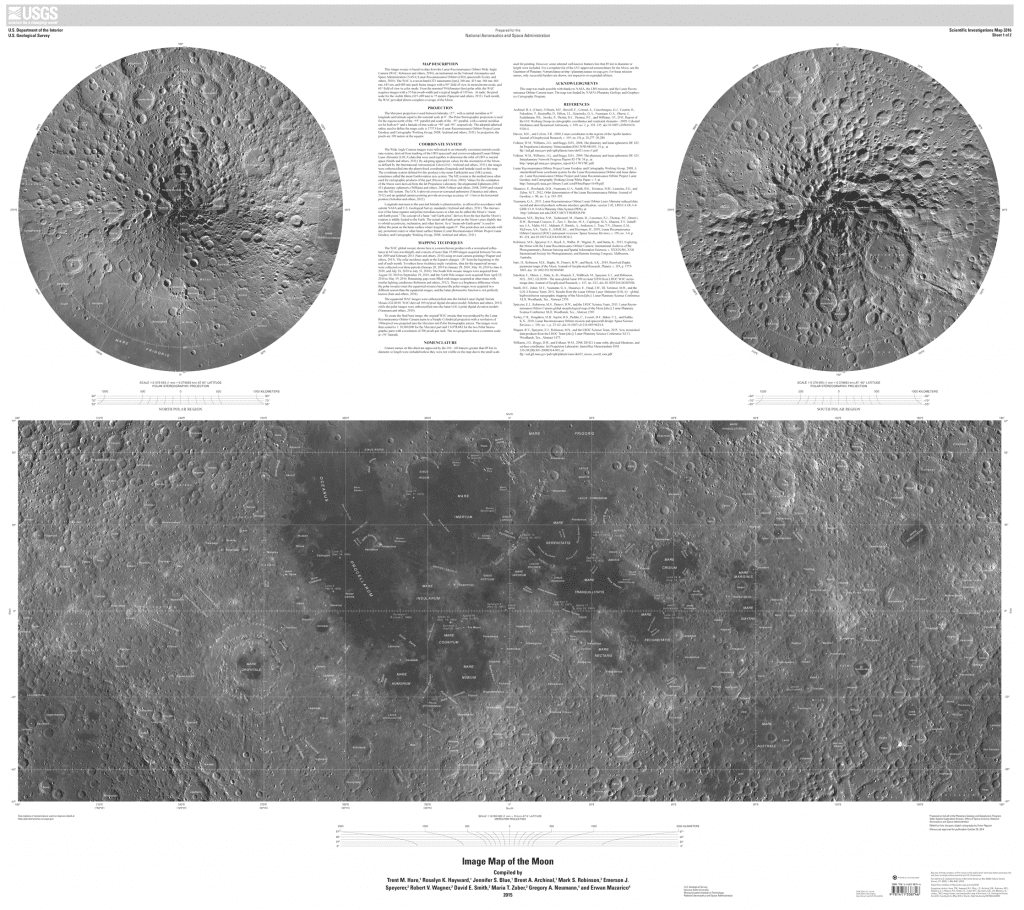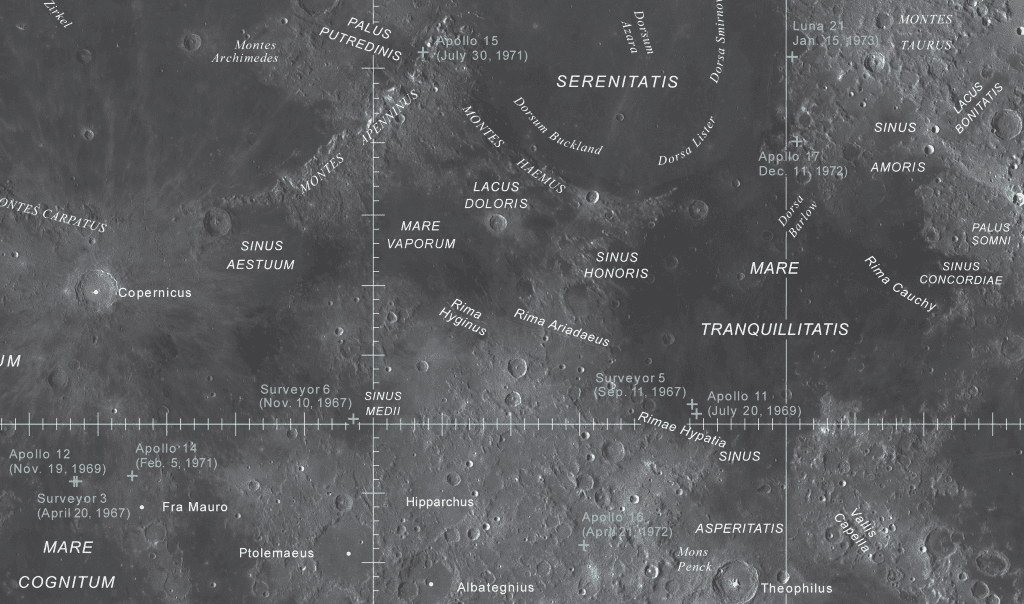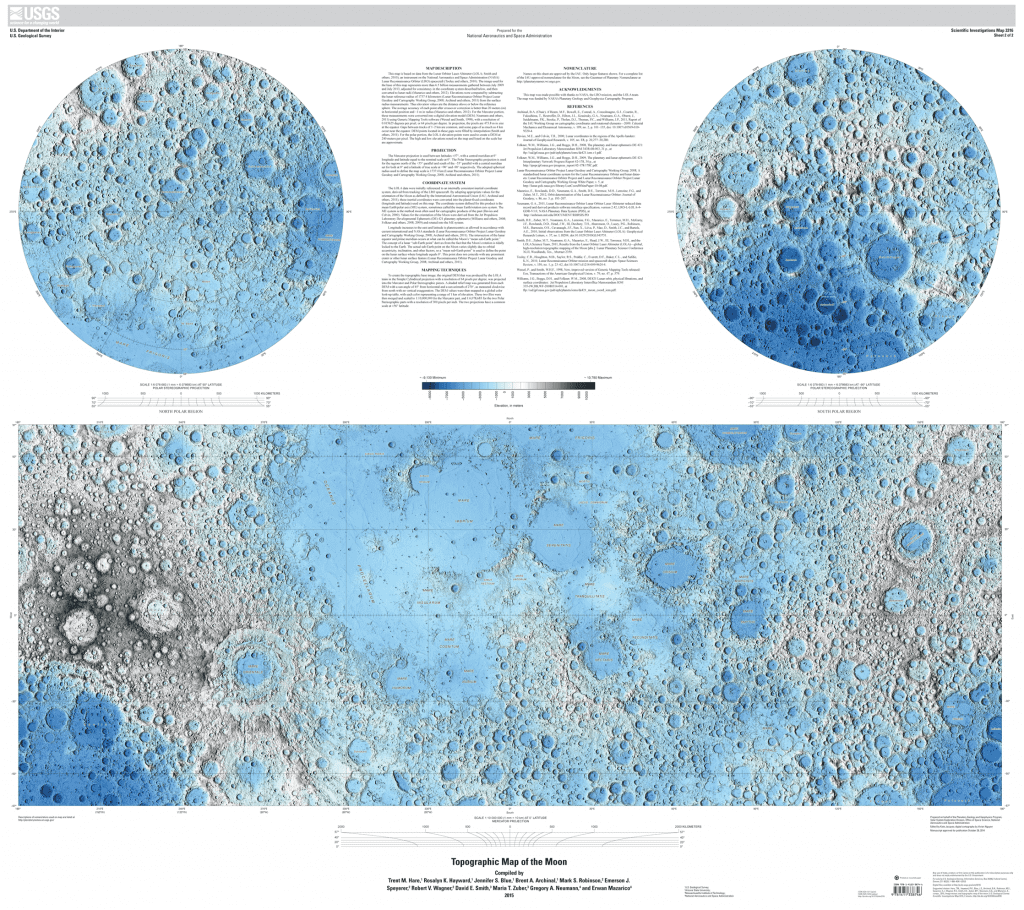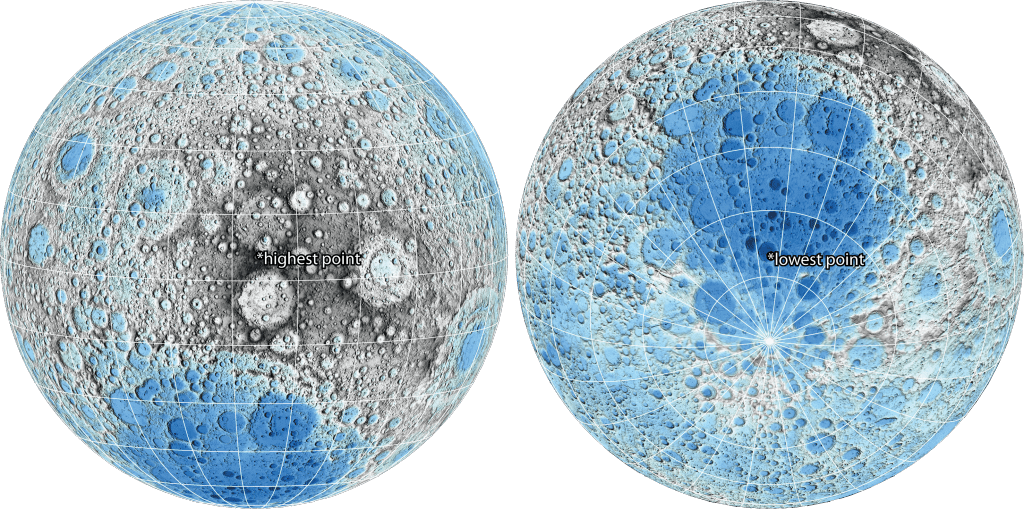If you’ve ever wanted to plan a hiking trip on the Moon, now you have the perfect opportunity: a gorgeous pair of new lunar maps – the Image Mosaic and Topographic Maps of the Moon – is now available online for everyone to see and download.


To me, it’s mind blowing that we have so high quality maps of the Moon – it’s the perfect thing to print and put up on your wall, I’ll definitely do one too (as soon as we fix the printer, that is). They were constructed using images and topographic (elevation) data from NASA’s Lunar Reconnaissance Orbiter (LRO), which has been orbiting the Moon since 2009. The first map is an image mosaic based on data from the Wide Angle Camera (WAC), a camera onboard the LRO.
“Images from the LRO Camera have greatly advanced our knowledge of the Moon,” said Dr. Mark Robinson, the principal investigator for the LRO Camera and professor at Arizona State University. “High resolution images have revealed very young lunar volcanoes ten to 100 million years old, contrary to conventional wisdom which suggests that lunar volcanism ceased between one and two billion years ago.”
The second map is based on topographic data from the Lunar Orbiter Laser Altimeter (LOLA), another instrument onboard the LRO.

“The LOLA data are a foundational dataset to be used in multiple types of studies for years to come,” said Dr. Erwan Mazarico, a co-investigator for the LOLA instrument. “The exceptional quality of the topographic map is a direct result of the large amount of data LOLA has collected over several years.”
The map has been colorized and indicates the elevation of different areas of the Moon’s surface, with the blue shades indicating low elevation areas, white indicating moderate elevation areas, and the gray to black shades indicating high elevation areas.
Interestingly enough, the highest point on the Moon is 6,358 feet higher than the summit of Mt. Everest, the highest point on Earth. Viewers can find the highest point on the map, which is 35,387 feet above the Moon’s average elevation, near the crater Engel’gradt.
“One of the last NASA published global maps of the Moon was NASA’s 1979 Lunar Chart (LPC-1), and this new public release product updates the Lunar ChartQ in several important ways,” said Brent Archinal, a scientist at the USGS Astrogeology Science Center.



